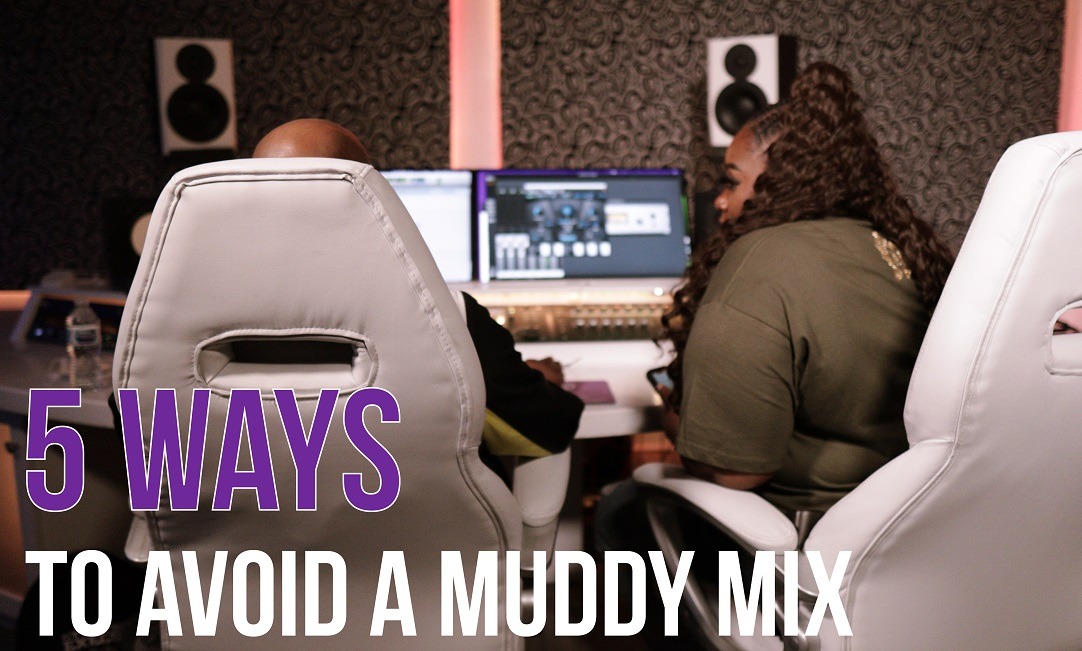5 Ways to Avoid a Muddy Mix

Follow five principles and avoid a muddy mix.
No one likes a muddy mix. It sounds unpleasant. When there is mud, frequencies fight, nothing pops, and it becomes difficult to hear each part.
Your home studio is not an ideal recording room. It has many drawbacks. When you record at a home studio, it often results in a build-up of frequencies in the lower mids, the main culprit responsible for muddy mixes. But people often ignore the issue, or worse, make it worse.
However, if you start de-mudding, you get clearer and more defined mixes.
So, don't waste time. Clean your mixes right fr om start and put the mud wh ere it belongs.
Here, are the tips to avoid a muddy mix and get clean and clear audio mixes.
1. Get a clean arrangement.
Every component of the production should have a place in the frequency spectrum. That said, you don't need ten things occupying the same frequency band. Choosing and tweaking the right sounds is critical for a clean mix. It becomes easier to bring interest into the song with the help of effective layers, even by simply muting different elements in different sections.
The separation of different elements across the frequency spectrum distinguishes great mixes from good ones. The majority of songs with great mixes have a few effective elements. These improve the overall sound of the production.
2. Get a clean recording.
Making sure that all the sound sources are as clean and crisp as possible before any additional processing is one of the most effective ways to make a mix sound clear. These include selecting the appropriate microphones based on the source, positioning them correctly to achieve the desired tone, adjusting the gain, and recording in an ideal acoustic space.
In some cases, multiple microphones are used to capture different textures on a single source at the same time in order to make it sound larger in the mix. Additional microphones can be used in larger recording rooms to capture the room tone for separate processing. It should be noted that during the recording process, it is critical to be aware of the proximity effect.
3. Try to manage the lower mids.
In general, the frequency range responsible for muddiness is 200-500Hz. If you start boosting instruments in this frequency range you will exacerbate the problem.
If you want to warm up a track, try cutting the upper mids around 2-6 kHz rather than boosting the lower mids.
Also, make sure to use cuts and boosts appropriately in the context of the mix. Quite often, something sounds like it needs more warmth in solo but sounds great in the mix.
4. Make use of a reference track.
It's difficult to tell if your mix is muddy or lacks definition without comparing it to a professional release. A/B your mix alongside a song from your favorite CD or iTunes collection, avoiding compressed tracks. You could import it into your DAW for quick comparisons, or listen to it through the same speakers or headphones.
Concentrate on the lower mids. While comparing, does your mix sound muddy? If so, which instruments, in particular, appear to be contributing to the most to this problem?
Continue using a reference when applying EQ to avoid removing too much of the 200-500Hz range, which could make your mix sound brittle.
Using a reference is not limited to treating muddiness. A reference track can be used to check the low end, high end, and the overall balance of the mixes.
Another reason for referencing to be important is that your studio and speaker setup may make your mix sound muddy even though it may not.
5. Make sure to examine a mix bus.
Applying a subtle cut to your mix bus or master fader is one of the quickest and easiest ways to treat muddiness in a mix.
Again, begin with a broad cut at around 300Hz and adjust to taste. This time, keep it subtler and try not to cut by more than 1/2dB. To add more character to your mix, use an analogue modeling EQ or a linear-phase EQ if you want the cut to be more transparent.
Conclusion
Though EQ plays a vital role in fixing muddiness, addressing arrangements and instrumentations should come first. Thus, to get a clean and defined audio mix work on your EQ besides having a clean arrangement and good recording system.
MIX Recording Studio, a professional recording studio offering a multitude of music-related services aids you in enhancing your music career. Our state-of-the-art facility offer the ideal recording set-up, audio engineers perfect your audio mixing and mastering services and aid in music production. Through regular posts, we also share knowledge and tips on music for you to groom yourself as an artist.
For more updates, contact MIX Recording Studio.